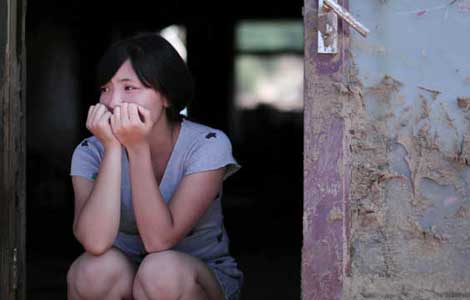
Experts say different varieties of poultry should be kept separately
Rigorous management of live poultry markets is vital to controlling the risk of infection from the bird flu, scientists said recently.
"The H7N9 outbreak lineage has spread over a large geographic region and is prevalent in chickens at live poultry markets, which are thought to be the immediate source of human infections," according to an article published in the journal Nature on Aug 21.
The H7N9 bird flu virus, first detected in March, has infected more than 130 people in China and killed more than 40.
"Different kinds of poultry should be raised and sold separately in order to control the spread of H7N9," said Guan Yi, one of the authors of the article in Nature and a flu expert at the University of Hong Kong.
Guan led the international team in testing samples collected from chickens, ducks, geese, pigeons, partridges and quail in Wenzhou, Zhejiang province; Rizhao, Shandong province; and Shenzhen, Guangdong province.
"The live poultry market is a place where different flu viruses accumulate and combine genetically. It's better for people not to come close to live poultry," he said. "Sanitation of the live poultry market requires regular and careful efforts, instead of simply killing all the live poultry in the market when an epidemic breaks out."
In their published study, Guan and his team also found another H7-type virus lurking in chickens in China that can cause more severe pneumonia than H7N9. The new virus, dubbed H7N7, can infect mammals, including people, according to the study.
"The discovery shows that the H7 viruses detected by health authorities may not be limited to the subtype of H7N9," said Guan.
In early April, Shanghai had all live poultry in three markets killed after health authorities detected H7N9 virus in samples.
In June, the city issued a regulation to manage the operation of live poultry markets. It ordered the markets to be moved from the downtown area and to be cleaned up every day. The city's markets must also be suspended for one day every one or two weeks for a complete sterilization.
The findings once again support that live poultry markets need to be managed rigorously, if not closed down, said Shu Yuelong, coauthor of the paper and director of the Chinese National Influenza Center.
"If it's not possible to close (poultry markets) down entirely, such markets should dispose of live poultry left at the end of the day to avoid the spread of the virus and strictly sterilize the area," Shu said.
He pointed out that China's poultry industry needs to increase its slaughterhouse capacity so consumers no longer need to come into close contact with live poultry.
Shu said the case of a 51-year-old female butcher diagnosed with H7N9 in Guangdong on Aug 10 (she is recovering) showed that the virus is still present in live poultry. Cases of human infection may continue to occur, he said.
He Jianfeng, a chief expert at Guangdong's Center for Disease Control and Prevention, said many business owners mix their poultry with new batches that arrive on following days, heightening the risk of infection.
"Many poultry are also raised free-range, and sometimes different kinds of poultry, such as chickens and ducks, are raised in close proximity in rural areas," he said.








